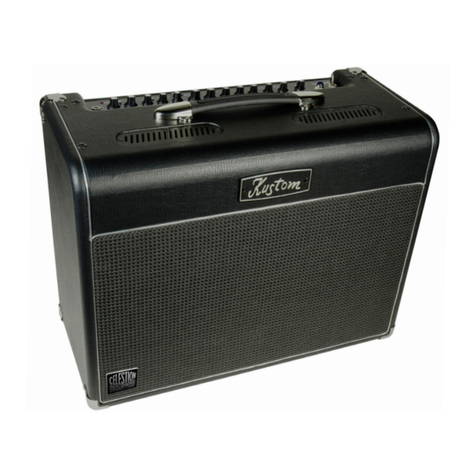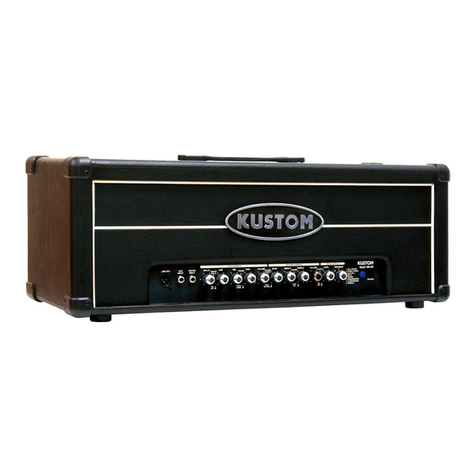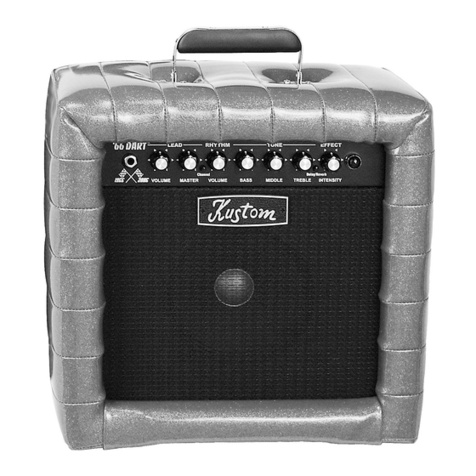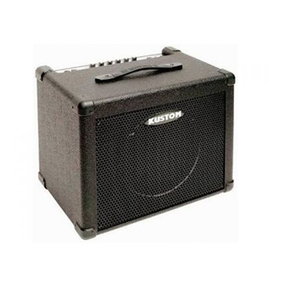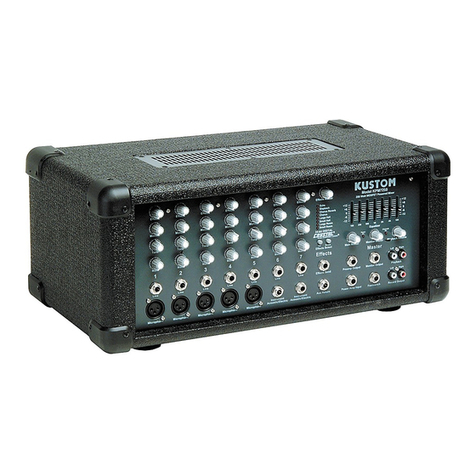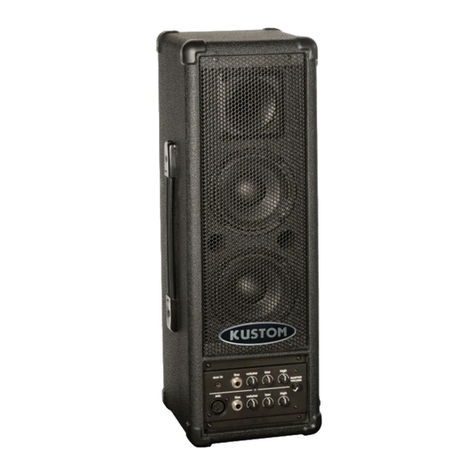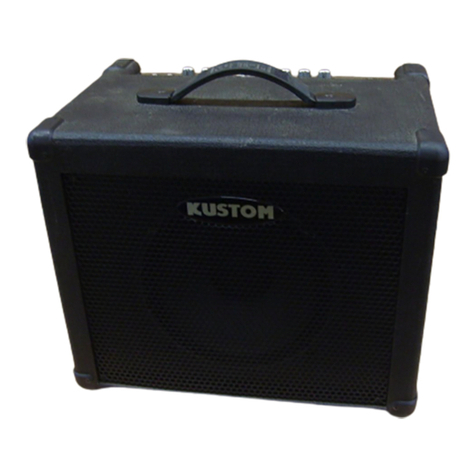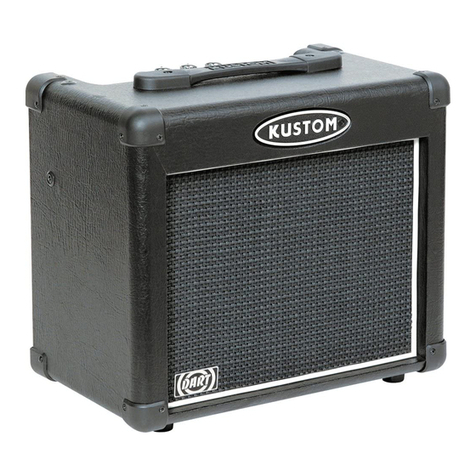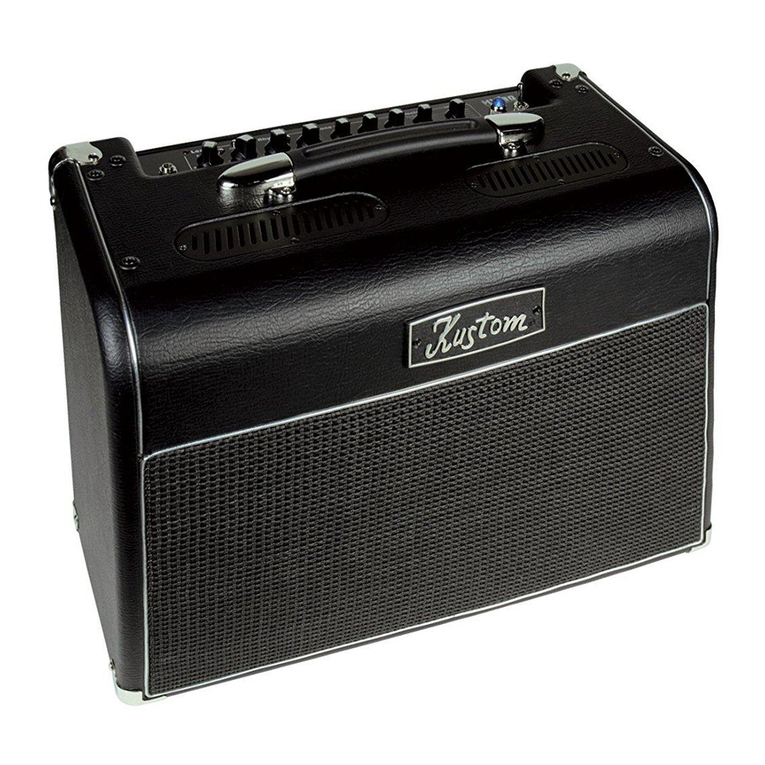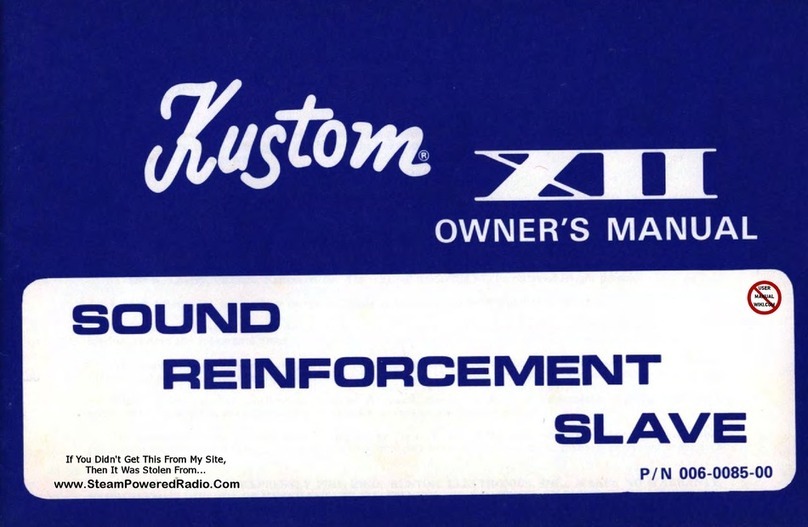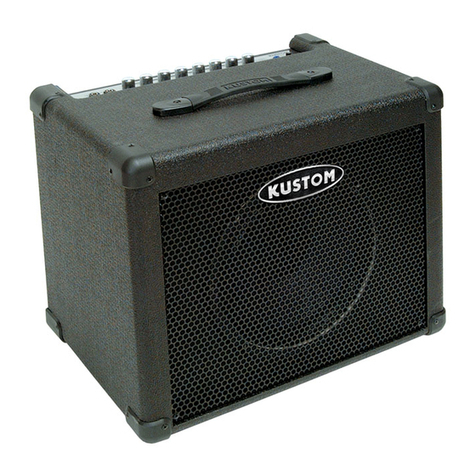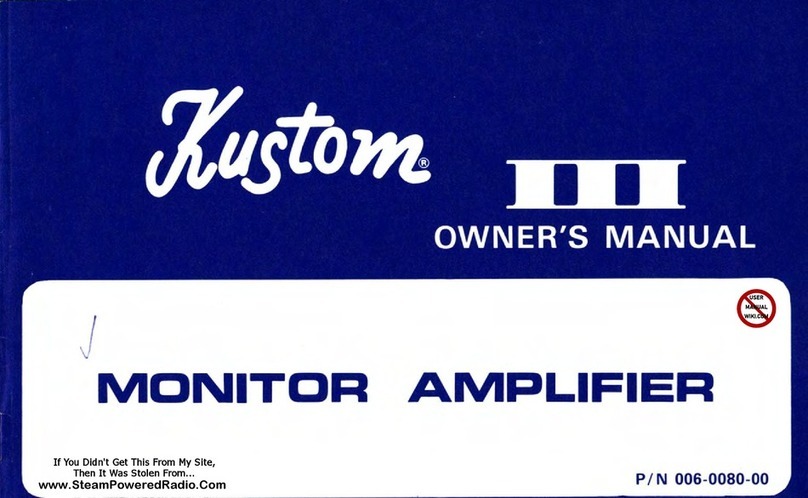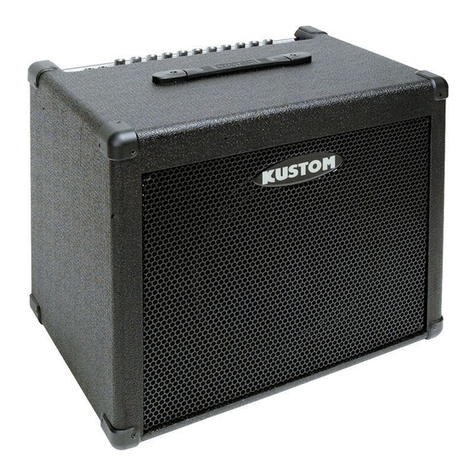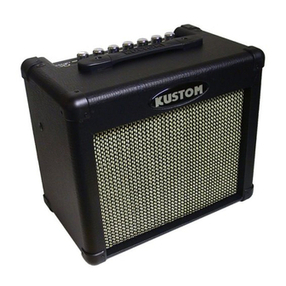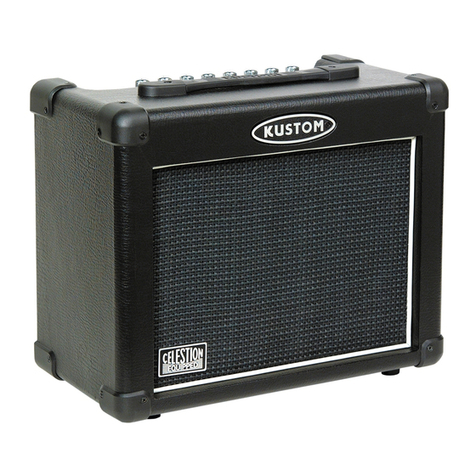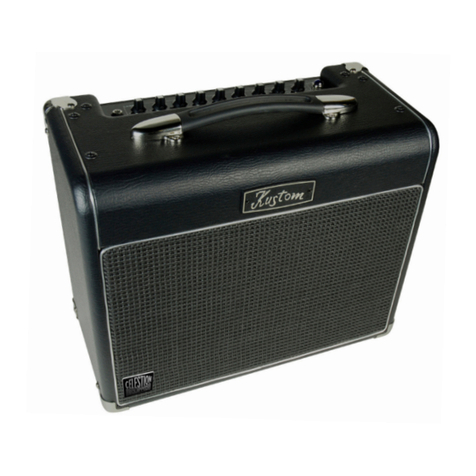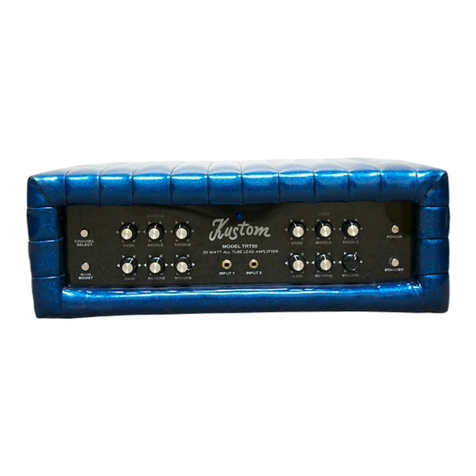The Defender 112 Combo Control Panel
1) Input: This is a 1/4” 2-conductor input jack for plugging in your instru-
ment. It is intended for guitar but will accept other instruments as well.
2) Bright: Flipping the Bright switch will increase the high frequencies
of the signal, while also reducing low frequencies for a chunkier, tighter
attack. This function is very useful for fine-tuning the amp’s tone and
feel for different guitars.
3) Volume: This control adjusts the gain in the input stages of the pre-
amp. Utilizing an exclusive new circuit called Duo-Mod™, it changes
gain in multiple stages to allow a more variable range from clean to
dirty than is typical of most tube guitar amps. This control is used in
conjunction with the Master to adjust the amount of distortion and vol-
ume. For cleaner sounds, adjust Volume to lower settings and the Mas-
ter to higher settings. For slight breakup, the controls should be set in
their middle ranges. For heavier distortion, set the Gain higher and the
Master lower.
4) Master: The Master sets the overall volume and simultaneously tai-
lors the tone controls to work better for that range. If the Master is set
higher, as it would be for cleaner sounds, then the tone is adjusted for
cleaner, “chimey” tone. If the Master is set lower, as it would be for
more distorted sounds, then the lows are increased for a fatter distor-
tion tone that’s still tight sounding. The resulting system makes it easy
to get a good tone without having to change the EQ settings.
5) Master Bypass: Non-master volume amps are something that vin-
tage amp experts have always touted as being an essential element to
great, “crank it up” tones. This switch will entirely disable the Master
Volume control from the circuit to give you the penetrating tone and
headroom of vintage, non-Master types of amplifiers.
6) Bass: This passive EQ adjusts the low frequency equalization of the
amplifier. It interacts with the Middle and Treble as described in the
Treble EQ section (8). For a tighter low end, use the Bass EQ set to lower
settings. This is particularly helpful when using the amp at very loud
settings.
7) Middle: This passive EQ adjusts the midrange equalization of the
amplifier. It interacts with the Bass and Treble EQ as described in the
8
The Defender Control Panels
